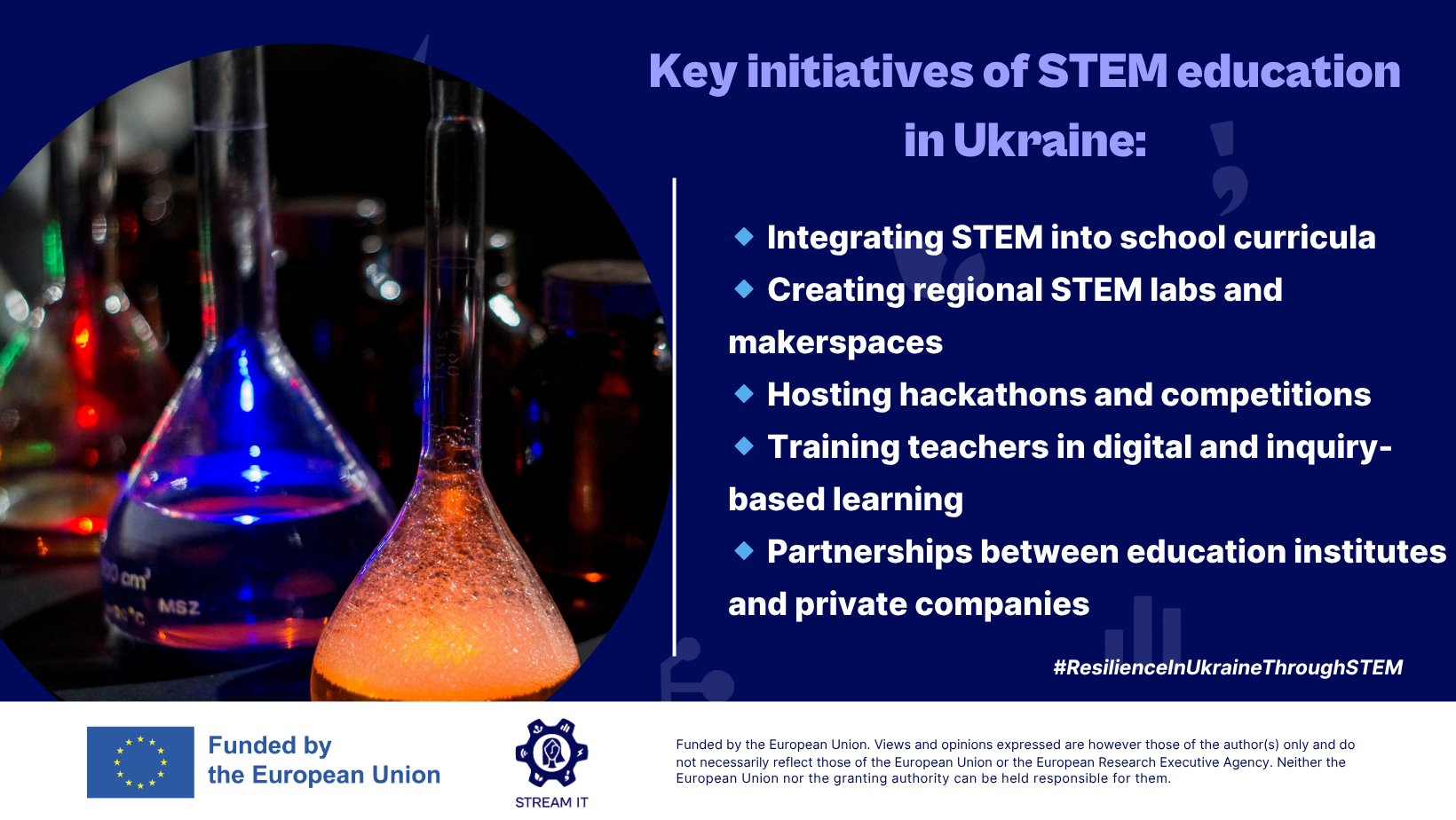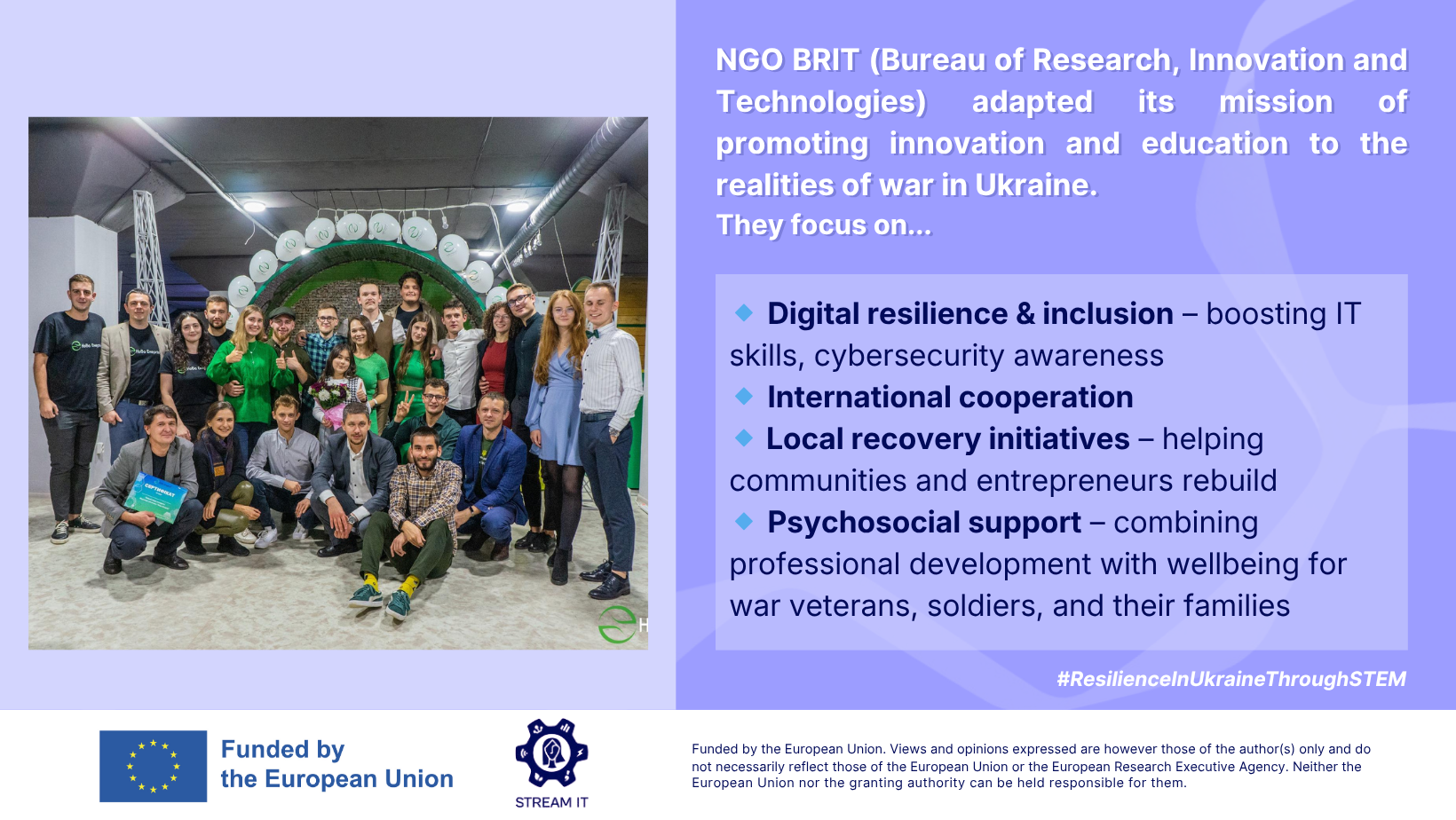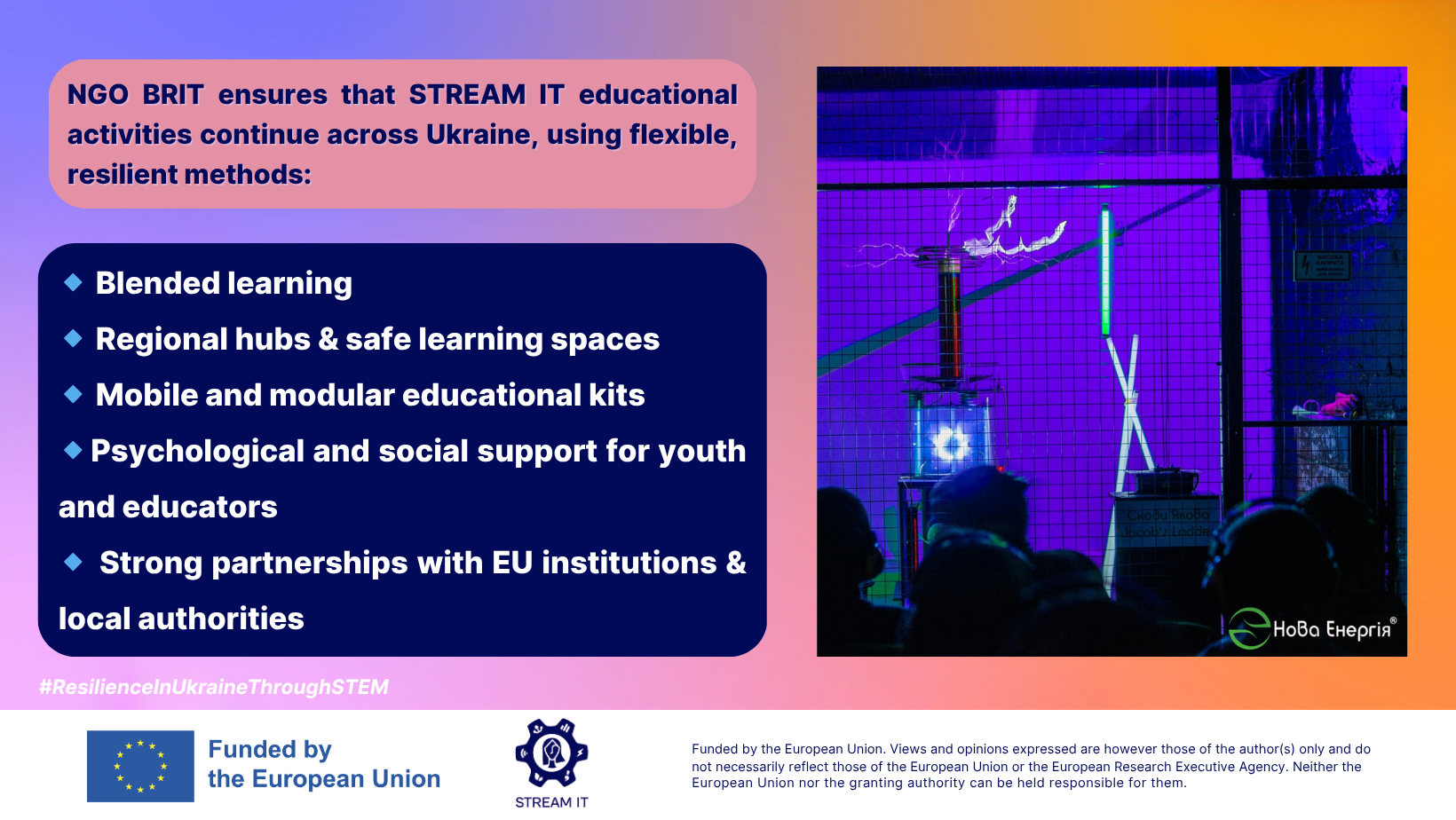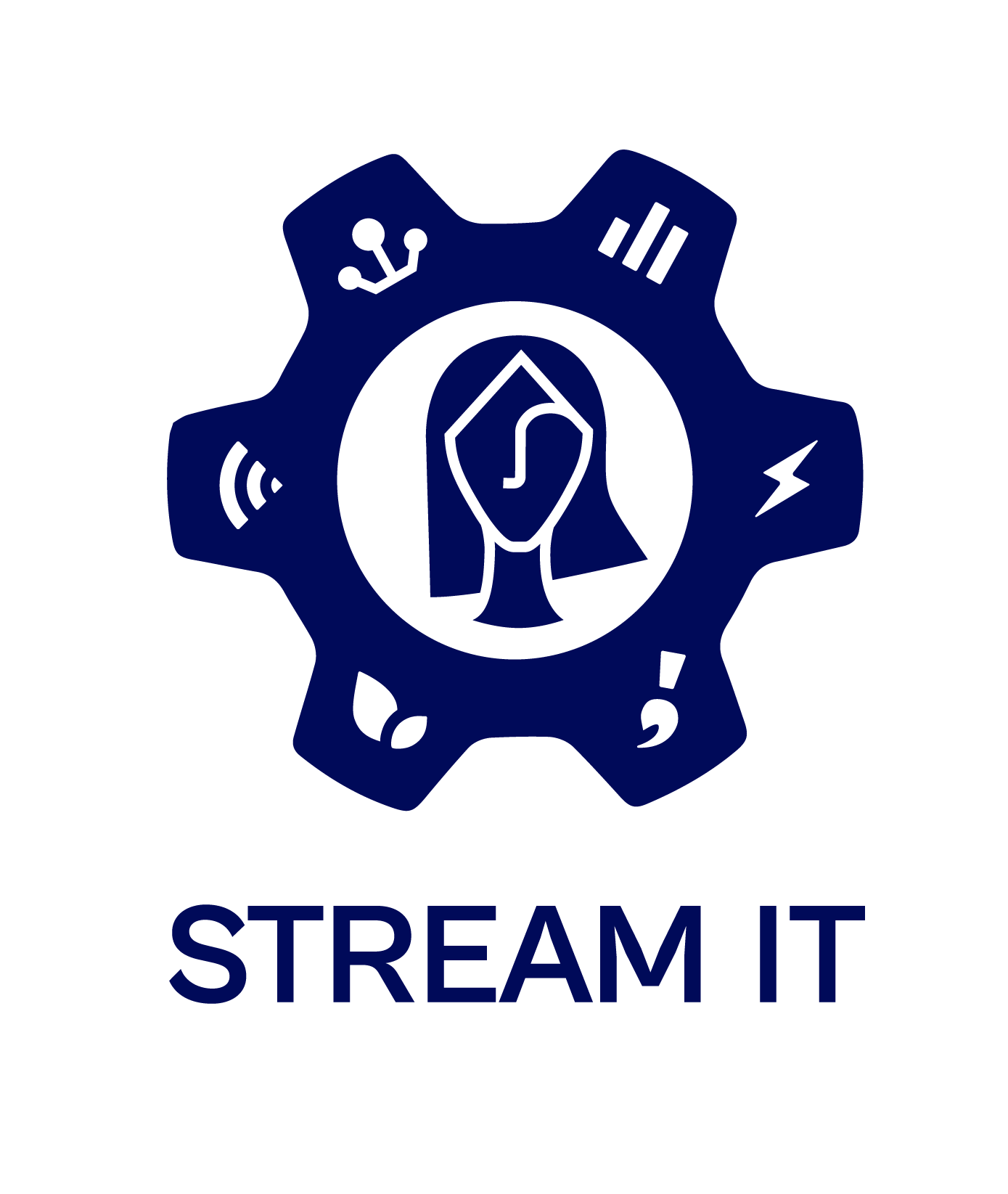Pursuing STEM fields is a journey of curiosity, courage, and opportunity for many girls and women. In Ukraine, the realities of war present profound challenges, shaping the context in which girls and women pursue education, skills, and careers in STEM. In this article we write about STREAM IT’s project partner, NGO BRIT (Bureau of Research, Innovation and Technologies), a Ukrainian non-governmental organisation that promotes sustainable regional growth through innovation, education, and digital transformation. One of NGO BRIT’s main focus is empowering women and youth through entrepreneurship, STEM education and leadership programs. Moreover, they focus on developing innovation ecosystems that connect business, academia, and local authorities, while also fostering the creative and green economy by integrating science, technology, and culture for inclusive community development. Guided by the insights of NGO BRIT’s team, we examine the current state of STEM education in Ukraine and the resilient strategies they implement to support their communities.
STE(A)M Education in Ukraine
STEM (Science, Technology, Engineering, and Mathematics) education in Ukraine is recognised as a national priority. Being integrated into the general secondary and higher education systems, the aim is to strengthen students’ problem-solving, critical thinking skills and creativity, preparing them for future careers in innovation and technology.
Key features and formats:
- Integration into school curricula: The Ministry of Education and Science of Ukraine (MoES) supports the gradual introduction of integrated STEM courses, project-based learning, and interdisciplinary modules in physics, chemistry, biology, IT, and mathematics.
- STEM centers and laboratories: Many regions have established STEM education centers, innovation labs, and makerspaces – for example, Science City “Nova Energiya” in Ivano-Frankivsk or the Junior Academy of Sciences of Ukraine network.
- Competitions and hackathons: National and regional events such as STEM festivals, robotics competitions, coding marathons, and science fairs promote hands-on learning and teamwork.
- Teacher training: Continuous professional development programs for educators help them apply inquiry-based and digital learning methods in classrooms.
Partnerships with industry: Collaboration between schools, universities, IT clusters, and private companies (e.g., through dual education or mentorship programs) connects theoretical learning with real-world application. STEAM adds Art (A) to the STEM approach – emphasising creativity, design, and cultural awareness alongside technology and science. This holistic model is rapidly gaining popularity in Ukraine, especially through informal and non-formal learning initiatives.
Typical STEAM activities include:
- Creative technology workshops (e.g., 3D modeling, digital art, animation, AR/VR projects).
- Interdisciplinary experiments combining science and design – for instance, eco-art installations, sustainable product design, or bio-art.
- Educational camps and clubs where children build projects that merge coding, robotics, and artistic storytelling.
- Museum and science-center programs that use interactive exhibits to connect scientific discovery with cultural heritage.
- Community and NGO projects focused on inclusive participation – particularly encouraging girls and underrepresented groups to explore tech and science through creative practice.



Continuity of NGO BRIT’s Activities During the War
- Security risks and displacement: Frequent air alerts, infrastructure damage, and temporary relocation of experts and participants have disrupted in-person events and field activities.
- Limited funding and uncertainty: Many local partners and small businesses have faced economic instability, making co-financing and long-term planning more difficult.
- Digital and energy disruptions: Power cuts, unstable internet, and logistical barriers have complicated communication and coordination with partners, especially in rural areas.
- Psychological stress and human loss: The war’s impact on mental health and family life has affected staff, educators, and participants, particularly among women and youth.
Despite these difficulties, BRIT has continued its mission. They are located in a bomb shelter, where they can continue their work related to training and mentoring. From the shelter, BRIT colleagues can coordinate meetings with their community and target audience. They stay active by engaging in the following activities:
- Focusing on digital resilience and inclusion – developing educational programs that strengthen IT skills, cybersecurity awareness, specially focusing on the participation of women, teens, and people over the age of 50 in the business and digital economy.
- Expanding international cooperation, especially through cross-border projects (Interreg, UNDP, Erasmus+, and CERV), which provide both resources and solidarity networks.
- Supporting local recovery initiatives, helping small communities and entrepreneurs apply innovation and sustainability principles in reconstruction efforts.
- Building psychosocial support into projects, combining professional development with wellbeing, empathy, and community care – for war veterans and soldiers, and their family members.
This way, NGO BRIT continues to operate as a bridge between local communities, educational institutions, and international partners, proving that innovation, cooperation, and human resilience remain powerful tools for rebuilding Ukraine.
Implementation of Educational Activities within the STREAM IT Project Despite Hindering Factors
Key implementation approaches include:
- Digital platforms and cloud-based tools (Zoom, Google Classroom, Miro, Moodle) for remote learning, mentoring, and collaboration between Ukrainian and EU partners.
- Regional hubs and safe learning spaces in cooperation with local schools, universities, and IT clusters, allowing small-group workshops and experiments even during power interruptions.
- Mobile and modular educational kits (portable equipment, offline learning materials) to ensure that STEM/STEAM experiments can continue without constant internet access.
- Psychological and social support, including peer networks and mentorship for educators and youth, to sustain motivation and emotional wellbeing.
- Strong partnerships with EU institutions and local authorities, ensuring access to expertise, digital infrastructure, and exchange opportunities.
By integrating technology, creativity, and adaptability, NGO BRIT can effectively implement STREAM IT educational activities even under wartime constraints – turning challenges into opportunities for digital innovation, inclusion, and resilience.

HÉTFA Research Institute
Csenge Polgár is a Junior International Project Manager at HÉTFA Research Institute – Division for International Cooperation in Budapest, Hungary. She holds a Master’s degree in Sociology. Her background in Sociology has equipped her with diverse research skills. In her role as a project manager, she manages tasks related to EU-funded projects (Erasmus+, HORIZON), and she is responsible for communication management.

